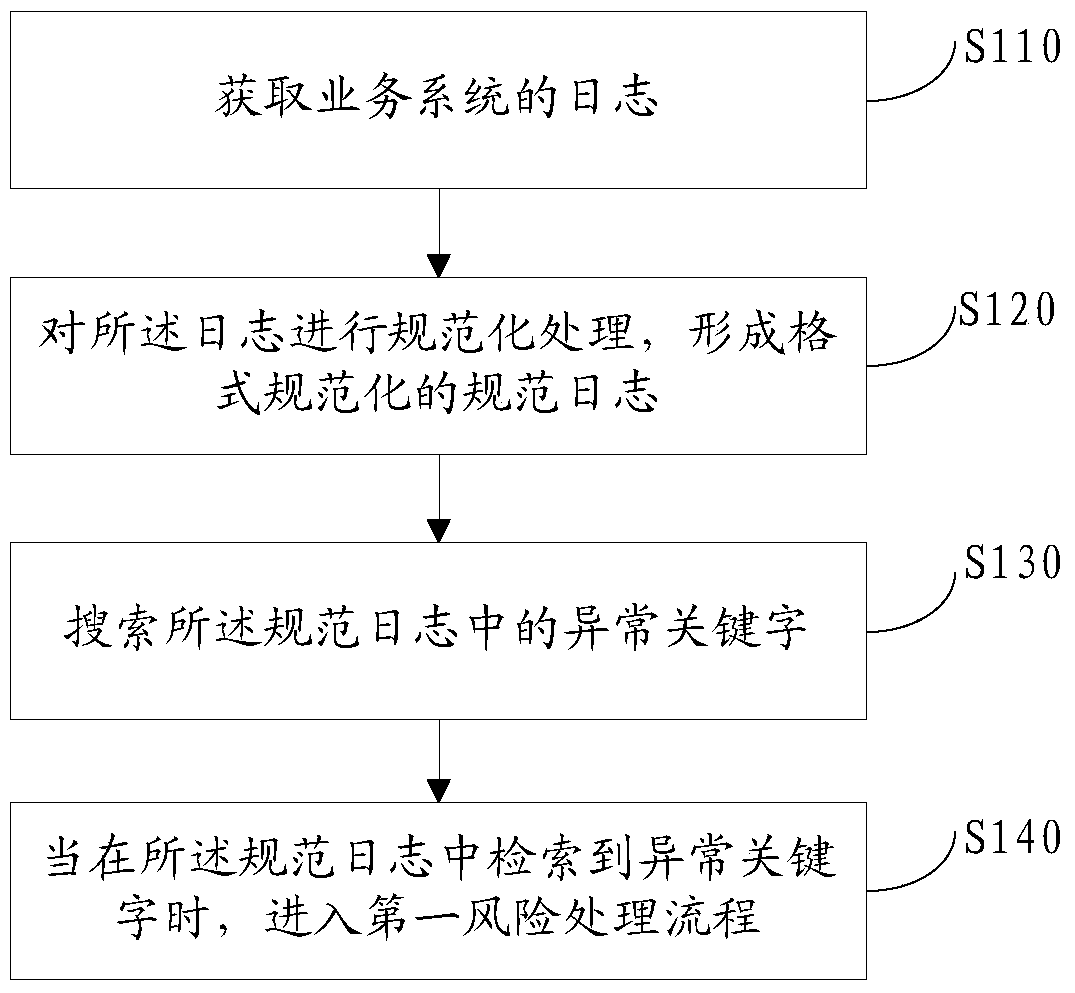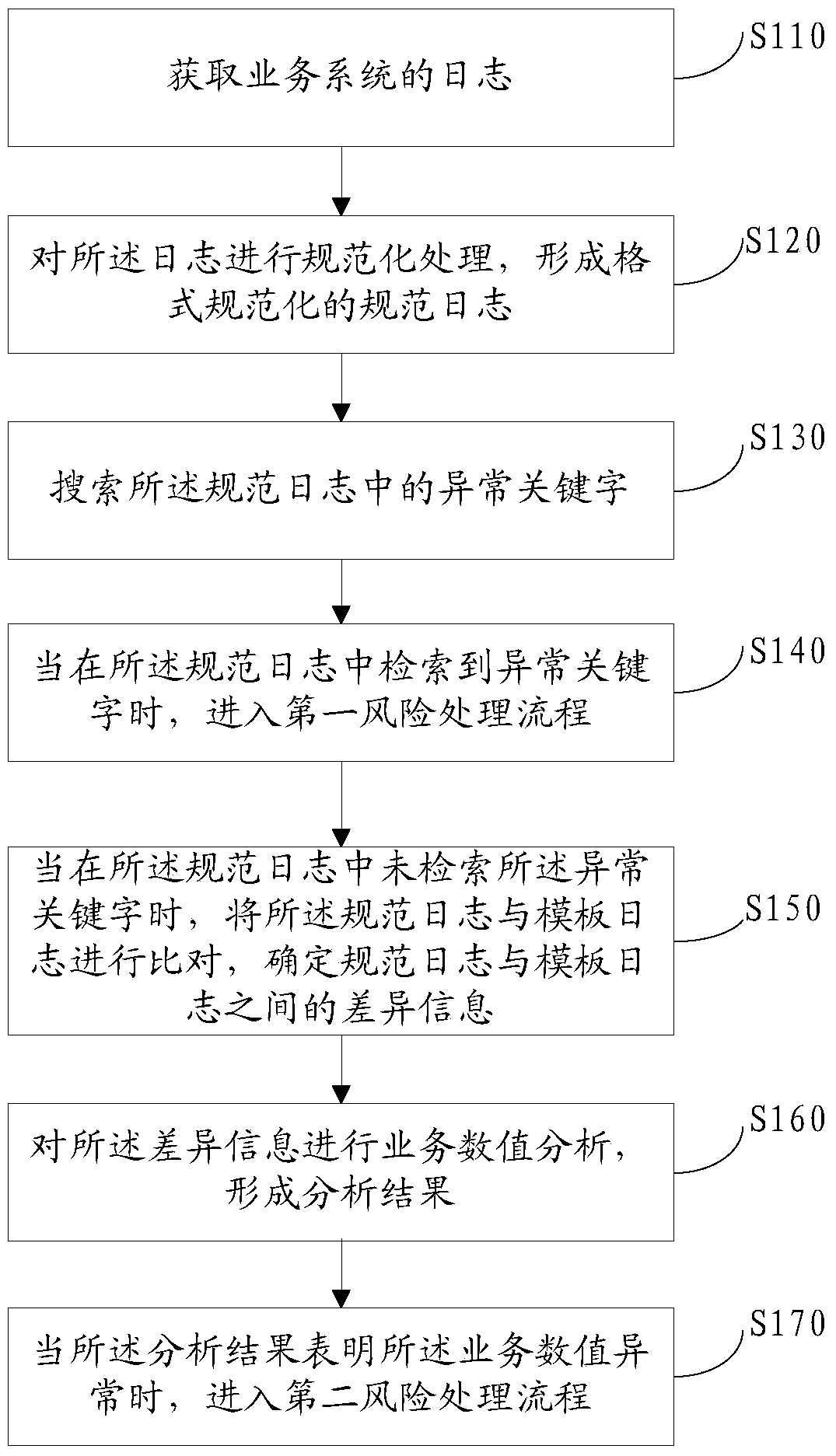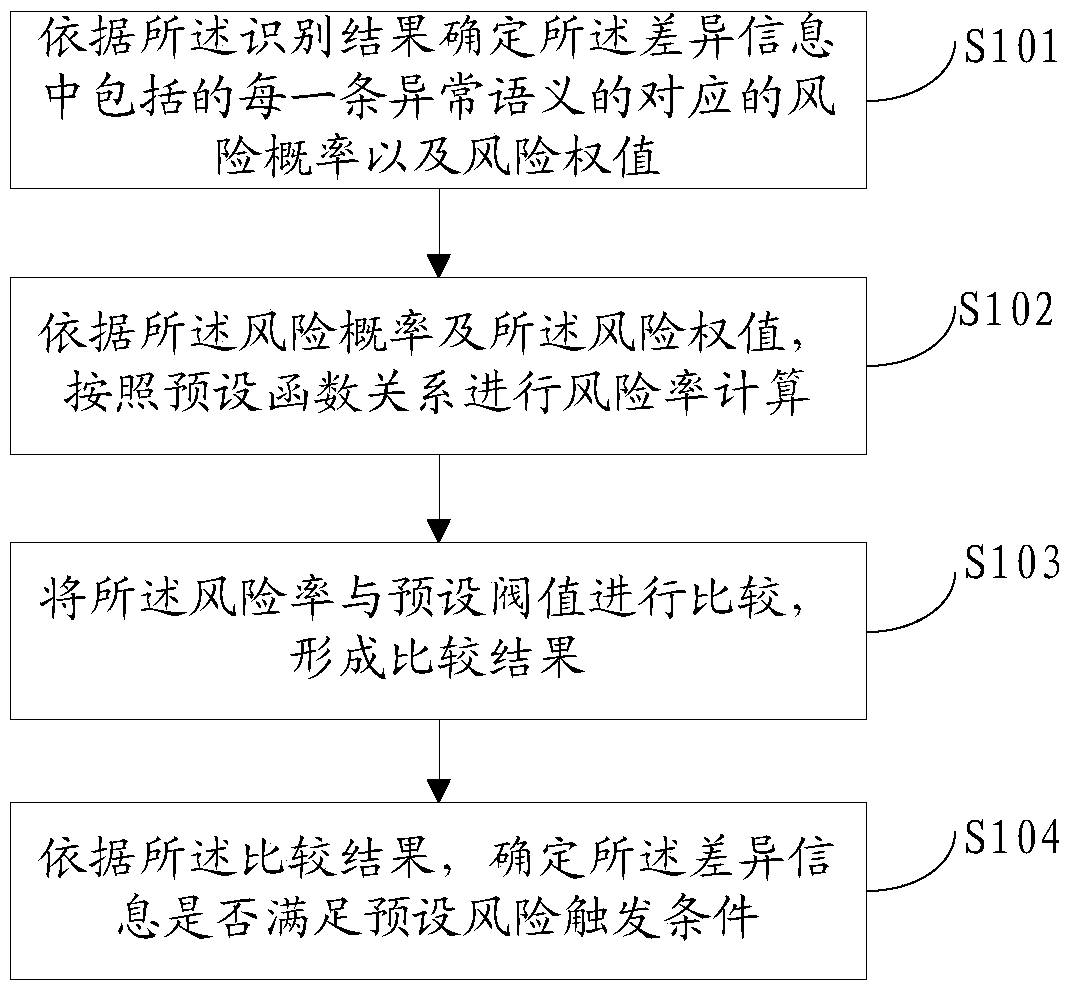Fault diagnosis method and device
A fault diagnosis and log technology, applied in the field of information processing, can solve problems such as business fault discovery and diagnosis delay, achieve the effect of reducing hardware and operation investment, improving efficiency, and reducing user complaints
- Summary
- Abstract
- Description
- Claims
- Application Information
AI Technical Summary
Problems solved by technology
Method used
Image
Examples
example 1
[0157] Step 1: Collect logs of system platforms, databases, middleware, and applications through the log collection platform. in, Figure 5 The collected logs include system logs, application logs, database / middleware logs and other logs formed by business systems; Figure 5 The system logs described in are equivalent to the platform logs described in the above embodiments.
[0158] Step 2: Log classification, that is, classify the collected logs, such as database type, middleware type, operating system type and application program type logs, and standardize the classified logs.
[0159] Step 3: log normalization processing, that is, analyze the keywords after the normalization processing by type, and enter the risk processing process if abnormal keywords are found.
[0160] Step 4: processing such as log analysis, log comparison, and log investigation; the log investigation includes the investigation of abnormal keywords, and the log comparison can be comparing the standard...
example 2
[0164] Figure 7 It is a flow chart of the fault diagnosis method for the application system in the business system, which may specifically include:
[0165] Step 1: Logs are formed while the application system is running.
[0166] Step 2: After obtaining the logs, the fault diagnosis device performs classification and normalization processing to form a standardized log.
[0167] Step 3: Compare the specification log with the template log to obtain difference information.
[0168] Step 4: Match the pre-configured abnormal keywords to realize text comparison and recognition;
[0169] Step 5: After text comparison and identification find no abnormalities, perform semantic analysis of abnormalities, and perform risk output based on the analysis results.
[0170] exist Figure 7 There are also abnormal keyword configuration and standard rule configuration steps shown in , and these steps may include receiving user input or configuration information input by peripherals. The s...
example 3
[0172] Figure 8 A detailed example of the fault diagnosis method based on any of the above-mentioned embodiments:
[0173] The methods include:
[0174] Step S1: collecting logs;
[0175] Step S2: log classification;
[0176] Step S3: log normalization processing;
[0177] Step S4: Determine whether there is an abnormal keyword, if yes, go to step S11, if not, go to step S5;
[0178] Step S5: Perform fuzzy comparison between the normalized log and the template log;
[0179] Step S7: performing semantic fuzzy recognition;
[0180] Step S8: Determine whether there is abnormal semantics, if yes, go to step S11, if not, go to step S9:
[0181] Step S9: when it is determined that there is no exception, obtain the difference file information;
[0182] Step S10: judging whether to update the innovation template log;
[0183] Step S11: business failure processing flow; that is, corresponding to the risk processing flow in the above-mentioned embodiment.
[0184] In the actua...
PUM
 Login to View More
Login to View More Abstract
Description
Claims
Application Information
 Login to View More
Login to View More - R&D Engineer
- R&D Manager
- IP Professional
- Industry Leading Data Capabilities
- Powerful AI technology
- Patent DNA Extraction
Browse by: Latest US Patents, China's latest patents, Technical Efficacy Thesaurus, Application Domain, Technology Topic, Popular Technical Reports.
© 2024 PatSnap. All rights reserved.Legal|Privacy policy|Modern Slavery Act Transparency Statement|Sitemap|About US| Contact US: help@patsnap.com










